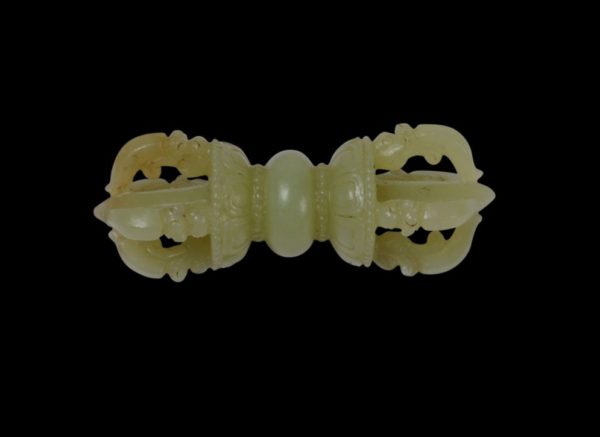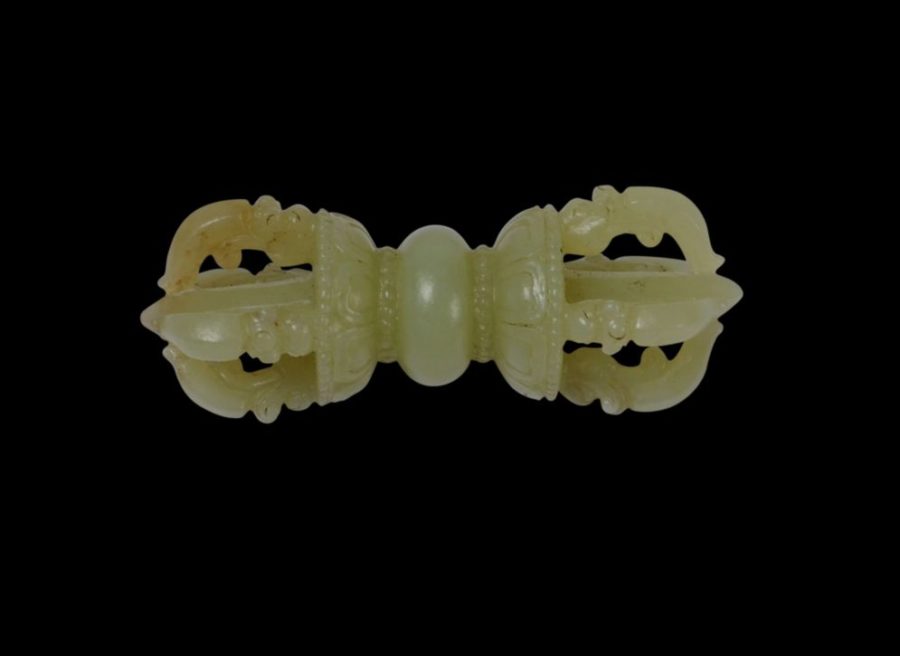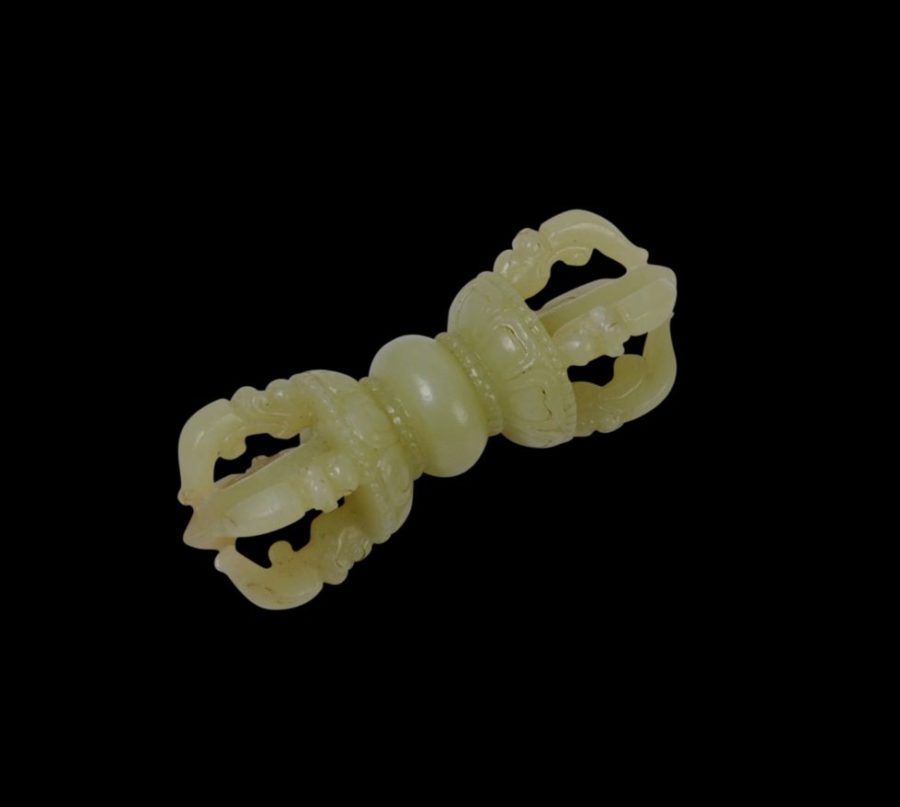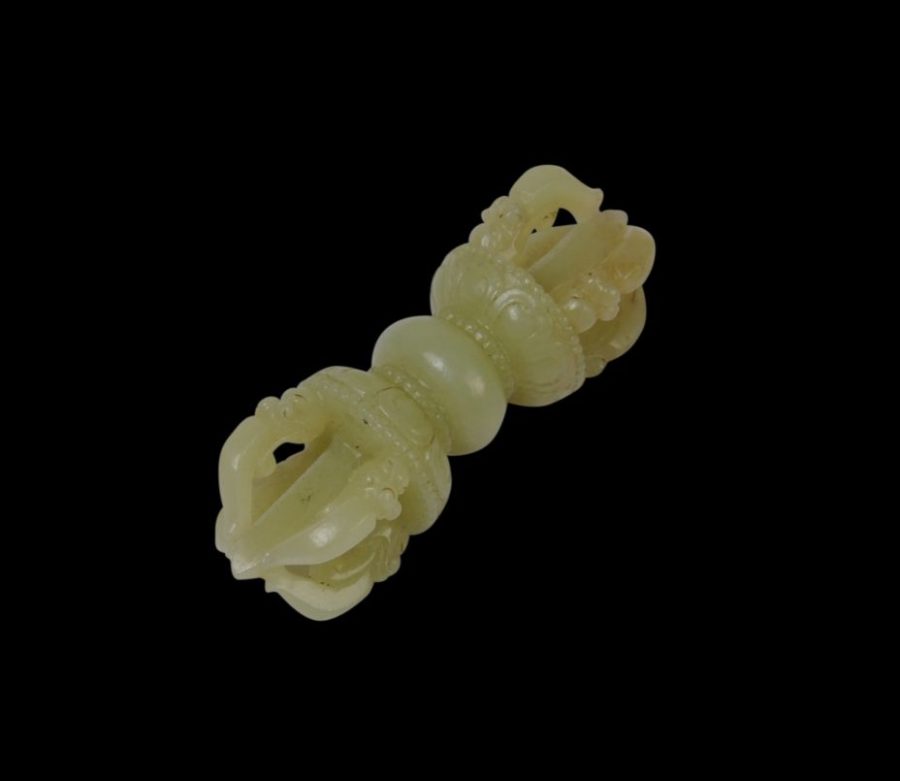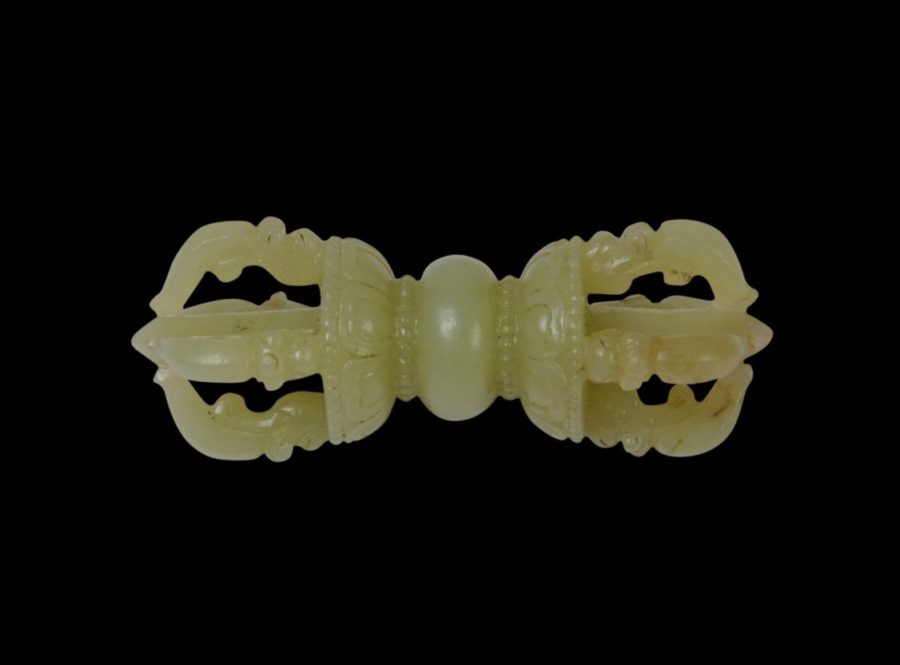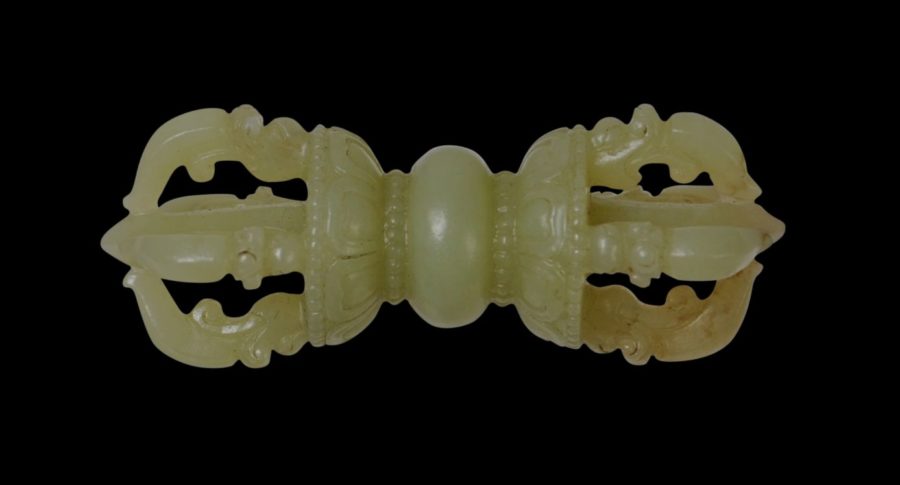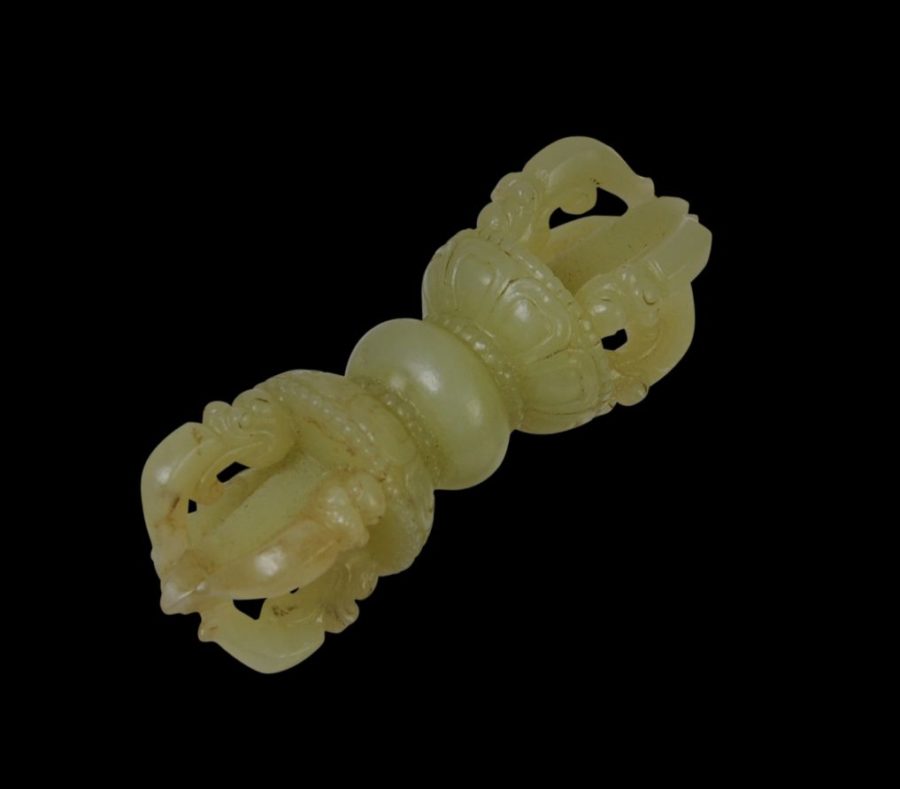This very fine vajra or sacred thunderbolt has been carved from a single piece of high-quality, pale-green celadon jade of even tone. It dates to the 18th century and most probably was produced in China but in a Tibetan or Nepalese style.
Each end of the vajra has four prongs, plus a central prong. There is very fine beading and the cups from which the spokes emerge have been beautifully chiselled with lotus petals.
A similar jade vajra, from the Potala Palace collection in Lhasa, and attributed to the 18th century, is illustrated in Shanghai Museum (2001, p. 131).
Such items in jade might have been produced in Tibet but they were certainly produced in China for the local and the Tibetan market. The Qianlong emperor was fascinated by Tibetan Buddhism and Chinese court art subsequently showed much Tibetan influence.
The vajra is an important symbol in Mahayana Buddhism. Originally, the thunderbolt was a weapon of Indra from Indian Hindu legend. Indra became incorporated into Tibetan Buddhist lore as a disciple of the Buddha, and was transformed into the bodhisattva Vajrapani. The vajra emerged as the strongest weapon in the universe and became a symbol of universal compassion of enlightened beings.
Iconographically, it is sometimes said that the five prongs at one end represent the five transcendent buddhas. The five prongs at the other end represent the five female buddhas.
The example here is in excellent condition.
References
Beer, R., The Encyclopedia of Tibetan Symbols and Motifs, Serindia, 2004.
Johnston, J., & L.P. Chan, 5,000 Years of Chinese Jade: Featuring Selections from the National Museum of History, Taiwan and the Arthur M. Sackler Gallery, Smithsonian Institution, San Antonio Museum of Art, 2011.
Shanghai Museum, Treasures from Snow Mountains: Gems of Tibetan Cultural Relics, Shanghai Museum, 2001.
Thurman, R.A. & D. Weldon, Sacred Symbols: The Ritual Art of Tibet, Sotheby’s/Rossi & Rossi,1999.


